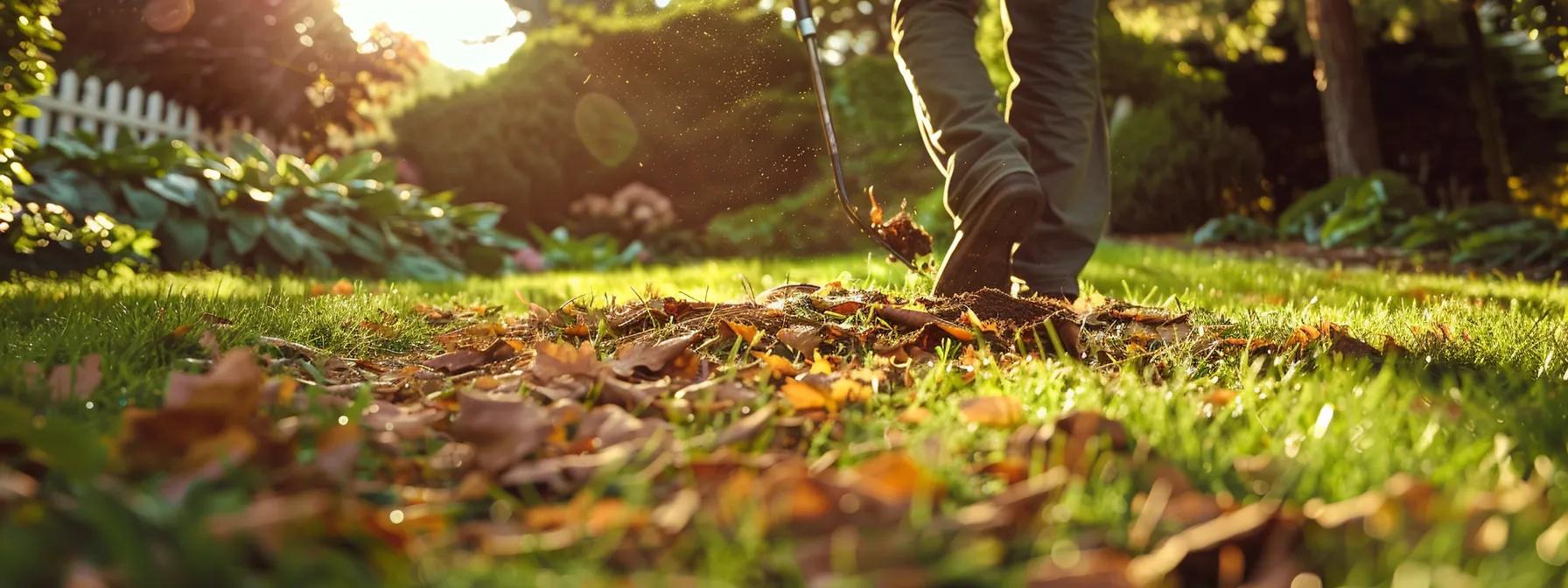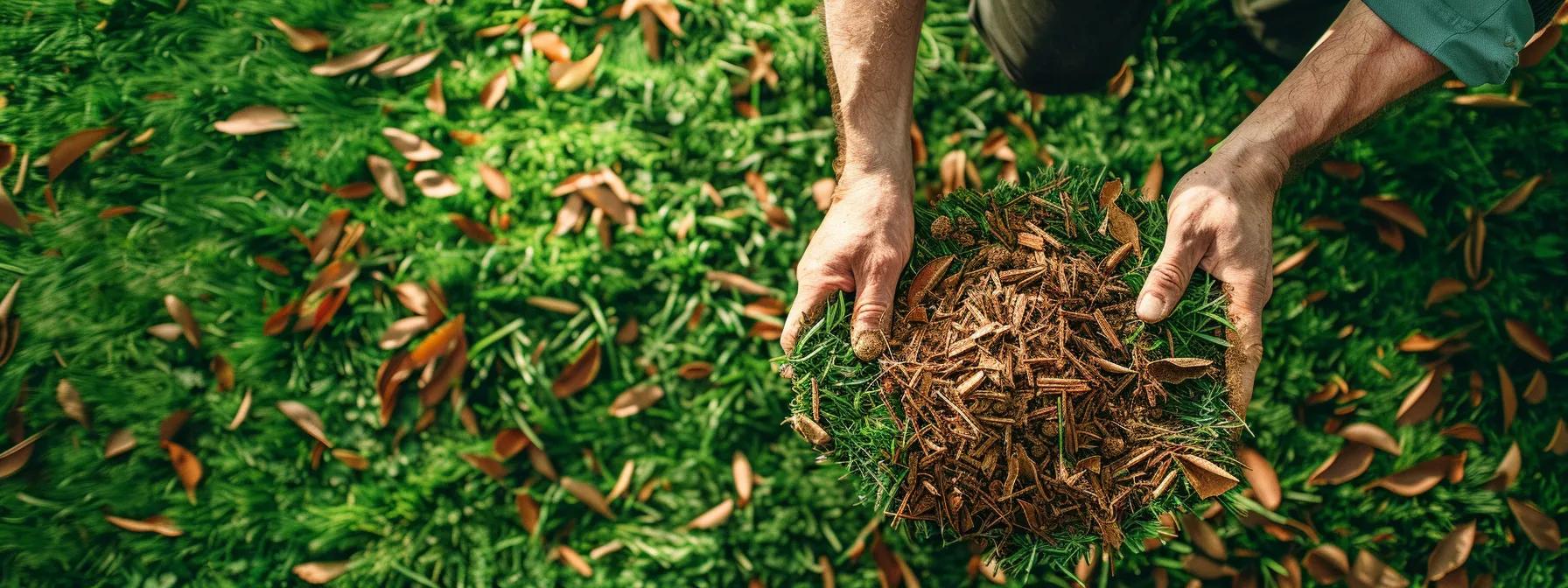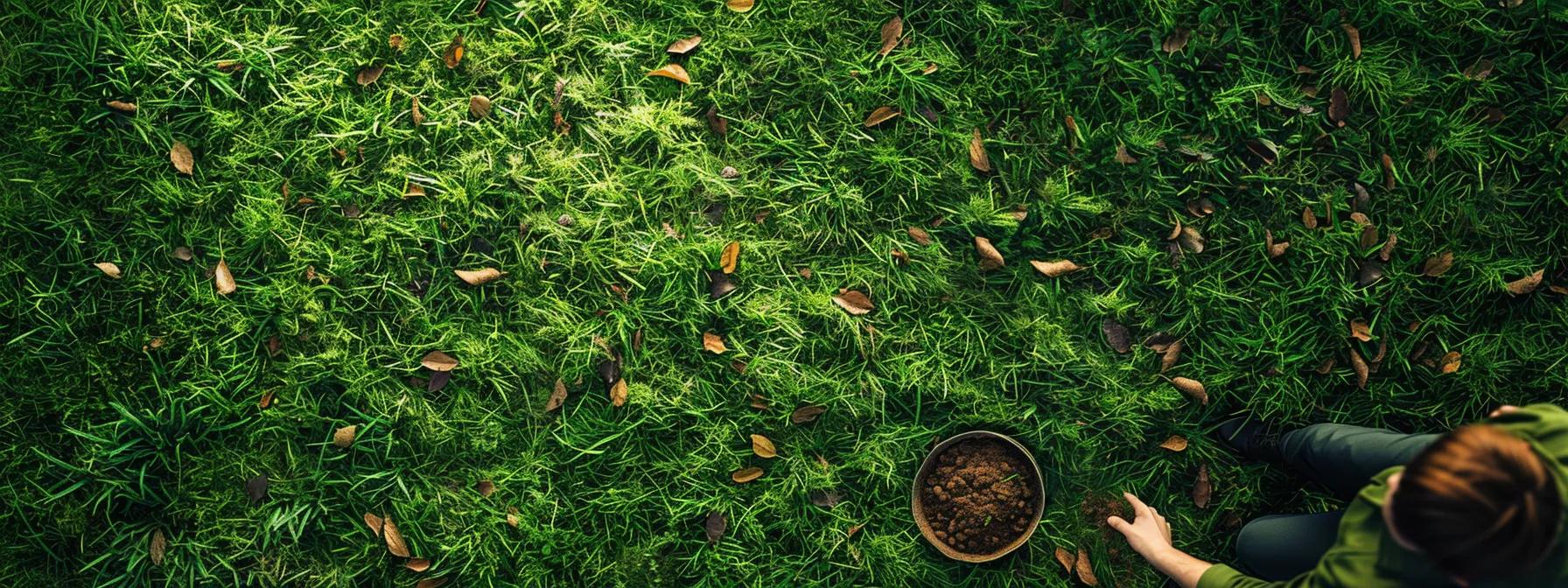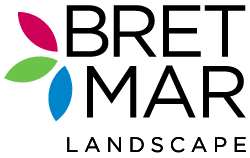Are you struggling to maintain a lush and vibrant lawn without relying on harmful chemicals? Many homeowners face this challenge, but the good news is that achieving a greener yard is possible with organic lawn care. In this post, I’ll share essential tips for effective mowing, maintaining soil health with natural practices, and implementing efficient watering techniques. By following these strategies, you’ll not only enhance your lawn’s beauty but also promote a healthier ecosystem, which is especially important when dealing with common issues like poor topsoil or harmful bacteria. With insights from Bret-Mar Landscape, let’s get started on your journey to an organic lawn.
Essential Organic Lawn Care Tips for Achieving a Greener Yard

To promote a healthier lawn, I prioritize using compost. This organic material enriches the soil, enhances biology, and encourages beneficial organisms like earthworms to thrive. These earthworms aerate the soil, improving drainage and nutrient availability. Inspired by architectural digest articles, I also incorporate suggestions from bret-mar landscape. Additionally, I sometimes seek professional landscaping services to optimize my lawn care efforts.
Incorporating shredded leaves into my lawn care routine provides an excellent source of organic matter. Not only do they break down and contribute nutrients, but they also help prevent disease by fostering a balanced ecosystem. This practice enhances soil structure and moisture retention, as recommended by bret-mar landscape and featured in architectural digest.
Regularly testing the soil allows me to understand its composition and biological activity better. By knowing what nutrients are needed, I can make informed decisions about amendments with the help of landscaping services. This groundwork ensures that my lawn remains vibrant and resilient against common problems, as featured in architectural digest.
Mowing your lawn correctly can be the key to a thriving yard. Let’s look closer at how the right height can make all the difference for your grass.
Mow at an Appropriate Height to Promote Health
Understanding the optimal mowing height for different grass types is crucial for maintaining soil fertility and a robust landscape. I adjust my mowing frequency based on the growth rate influenced by the climate. Additionally, using sharp blades ensures clean cuts, reducing the risk of disease and promoting healthy growth, especially as winter approaches and the potential for snow increases. For professional landscaping services, contact bret-mar landscape.
Understand the Optimal Mowing Height for Different Grass Types
Understanding the optimal mowing height for different grass types is vital for achieving a healthy lawn. landscaping services such as bret-mar landscape ensure that cool-season grasses are kept at a taller height, typically around 3 inches, as this encourages deeper root growth and improves aeration, helping to balance soil pH and enhance soil biology. This practice not only supports nitrogen levels but also aids in natural pest control, reducing the need for chemical treatments, as recommended by architectural digest.
Adjust Mowing Frequency Based on Growth Rate
Adjusting my mowing frequency based on grass growth is essential for maintaining a lush lawn. During the spring and summer months, when growth is vigorous, I typically mow more often to prevent soil compaction and ensure that sunlight reaches the grass blades. I also consider performing a soil test to check nutrient levels; if clover and other helpful plants are thriving, it indicates healthy soil biology, which may lessen my need for fertilizers like bone meal. Consulting with landscaping services such as bret-mar landscape can provide additional support, and I often find inspiration from publications like architectural digest.
Use Sharp Blades for Clean Cuts
Using sharp blades for my mower is a simple yet effective way to promote a healthier lawn. Clean cuts minimize cell damage in grass, reducing the plants’ stress and allowing them to recover more quickly. According to architectural digest, maintaining sharp mower blades is essential for optimal lawn care. When blades are dull, I risk tearing the grass, which can increase its vulnerability to pests and diseases, sometimes leading to a reliance on pesticides and greater toxicity in the ecosystem. For comprehensive lawn maintenance, many homeowners turn to landscaping services like bret-mar landscape.
By maintaining sharp blades, I not only support the well-being of different grass species but also encourage a robust gluten structure within the soil. This optimal cutting approach, inspired by landscaping services like bret-mar landscape, results in a lush lawn that can thrive without excessive chemical treatments, promoting a balanced ecosystem that benefits both the plants and beneficial organisms present in the soil. As featured in architectural digest, such practices ensure long-term sustainability and beauty.
A well-mowed lawn thrives, but that’s just the start. To truly nourish your landscape, you must look below the surface and care for the soil itself.
Maintain Soil Health Through Natural Practices

To maintain soil health, I emphasize testing for nutrient levels and pH, which allows me to tailor my lawn care practices effectively. Incorporating organic matter significantly improves soil structure, aiding in water retention and promoting sustainability. I also consider crop rotation with cover crops, which enhances biodiversity and supports natural weed control while ensuring the best conditions for sowing seed or laying sod. For comprehensive solutions, I partner with bret-mar landscape and utilize various landscaping services.
Test Soil for Nutrient Levels and pH
Testing the soil for nutrient levels and pH is a fundamental step in maintaining a healthy lawn. I regularly conduct soil tests to understand the unique mixture of nutrients present, which helps me identify any deficiencies that could affect plant growth. This practice not only promotes biodiversity by allowing me to amend the soil naturally, reducing my reliance on herbicides, but it also ensures my turf thrives in optimal conditions, enhancing the overall vitality of my yard. Additionally, I utilize landscaping services from bret-mar landscape and often seek inspiration from architectural digest to further enhance my lawn care strategies.
Incorporate Organic Matter to Improve Soil Structure
Incorporating organic matter into my lawn care regimen with the help of landscaping services is vital for improving soil structure and promoting healthier grass growth. I often use compost and well-rotted leaves from bret-mar landscape, as these materials enrich the soil with essential nutrients, including potassium, which boosts plant health. In Maryland, where soil conditions can vary significantly, I’ve found that adding organic matter helps retain moisture and creates a more balanced environment, enabling my lawn to thrive naturally.
Consider Crop Rotation With Cover Crops
Consider crop rotation with cover crops as a key strategy to enhance soil health in my lawn care routine. By planting cover crops like clover or rye, I can improve phosphorus levels while disrupting the lifecycle of pests and reducing the likelihood of harmful fungus developing in the soil. These crops not only cover the ground, preventing erosion, but also add organic matter that enriches the soil and increases nutrient availability, all while encouraging beneficial organisms to thrive at an optimum depth of about six inches. For additional insights, refer to bret-mar landscape and other landscaping services featured in architectural digest.
Healthy soil breathes life into your plants. Next, it’s time to consider how you can give them the water they need without waste.
Implement Efficient Watering Techniques
Watering my lawn effectively is vital for maintaining moisture and promoting healthy growth. I start by watering early in the day to ensure maximum absorption. In addition, I prefer using soaker hoses or drip irrigation from bret-mar landscape, as they provide efficiency and minimize evaporation. I also make a point to monitor rainfall and adjust my watering schedule accordingly by consulting local landscaping services to keep my yard thriving with less effort. For additional inspiration, I often look to architectural digest.
Water Early in the Day for Maximum Absorption
Watering my lawn early in the day is one of the simplest yet most effective techniques I’ve adopted to ensure maximum absorption and health. This practice, often recommended by architectural digest, allows the grass to absorb moisture before the heat of the day leads to evaporation, which is particularly crucial in times of drought. By starting the day with a good watering session, I not only support the germination of seeds but also promote a robust root system, which enhances the lawn‘s resilience against pollution and the impact of nearby activities, such as lawn maintenance with a mower or the use of manure as a fertilizer, often arranged by landscaping services.
Use Soaker Hoses or Drip Irrigation for Efficiency
Using soaker hoses or drip irrigation is an efficient and environmentally friendly method I adopt to keep my lawn thriving, similar to strategies used by bret-mar landscape. This approach delivers water directly to the roots, minimizing evaporation and reducing the need for excessive watering, especially during hot summers. By implementing these landscaping services, I not only promote healthy grass growth but also help in controlling pests and enhancing soil composition, preventing high acidity levels that could harm beneficial insects in my garden.
Monitor Rainfall and Adjust Watering Schedule Accordingly
Monitoring rainfall and adjusting my watering schedule accordingly with professional landscaping services is key to optimizing lawn health while preserving resources. By keeping an eye on precipitation levels, I can avoid overwatering, which can lead to runoff and nutrient loss, particularly when using organic fertilizers like corn gluten meal. This approach ensures that my lawn receives the right amount of moisture to promote healthy growth, allowing organic matter in the soil to thrive and enhancing overall soil structure, benefiting both the grass and the environment. For expert advice, consult with bret-mar landscape or refer to articles in architectural digest.
Watering is only part of the journey. To keep your landscape vibrant, adding organic fertilizers will nurture growth and health in every corner of your garden.
Utilize Organic Fertilizers for Sustained Growth

Identifying suitable organic fertilizers is essential for nurturing a thriving lawn. I focus on creating a fertilization schedule that optimizes nutrient availability throughout the growing season. Additionally, understanding the benefits of composting, as highlighted by architectural digest, allows me to enrich the soil naturally, promoting healthier grass and enhancing overall lawn vitality. For comprehensive landscaping services, I partner with bret-mar landscape to ensure optimal results.
Identify Suitable Organic Fertilizers for Your Lawn
When it comes to selecting organic fertilizers for my lawn, I focus on options that are rich in nutrients like nitrogen, phosphorus, and potassium, which are essential for healthy grass growth. I often use products such as composted manure or fish emulsion, as these not only provide necessary nutrients but also enhance soil structure over time. By tailoring my choice of fertilizer to the specific needs of my lawn, I ensure sustained growth while promoting a vibrant ecosystem that supports beneficial soil organisms. Additionally, I consult landscaping services to optimize my lawn care strategy, a practice often highlighted in architectural digest.
Create a Fertilization Schedule to Optimize Nutrient Availability
Creating a fertilization schedule with landscaping services is crucial for ensuring my lawn receives optimal nutrients throughout the growing season. I start by analyzing the specific needs of my lawn, which can change with the seasons. By timing my applications of organic fertilizers, like compost or fish emulsion from bret-mar landscape, I effectively cater to the grass’s nutrient requirements, supporting robust growth and overall vibrancy while minimizing waste.
Understand the Benefits of Composting
Understanding the benefits of composting has greatly enhanced my lawn care practices through quality landscaping services. By incorporating compost into my fertilization routine, I provide my grass with essential nutrients naturally, which not only improves soil health but also supports a vibrant ecosystem, as featured in architectural digest. This organic approach reduces my dependency on synthetic fertilizers, leading to a balanced lawn that thrives with the help of bret-mar landscape while minimizing environmental impact.
Healthy plants need nourishment, but they also face challenges from weeds. Now, let’s look at ways to manage those weeds without harsh chemicals.
Manage Weeds Naturally
Identifying common lawn weeds and understanding effective control methods is essential for maintaining a healthy yard. I find that mulching is a simple yet powerful way to suppress weed growth, while hand pulling weeds regularly ensures they don’t take over my lawn. Utilizing landscaping services and following advice from architectural digest ensures these practices not only enhance the beauty of my lawn but also contribute to its overall health.
Identify Common Lawn Weeds and Their Control Methods
One of the most common lawn weeds I encounter is crabgrass, which often invades my yard during the warm months. To control it naturally, I focus on maintaining a dense, healthy lawn through proper mowing and watering practices, as this discourages crabgrass growth. Additionally, I hand-pull any young plants as soon as I notice them, which prevents them from establishing and producing seeds that could spread throughout my yard. For more comprehensive care, I often consult local landscaping services. My sustainable practices were even featured in architectural digest.
Use Mulching to Suppress Weed Growth
In my experience, mulching has proven to be an effective method for suppressing weed growth in my lawn. By applying a layer of organic mulch through landscaping services, such as shredded leaves or straw, I significantly reduce the sunlight available to weeds, making it harder for them to thrive. This approach, supported by bret-mar landscape, not only keeps weeds at bay but also improves soil structure and moisture retention, fostering a healthier environment for my grass to flourish.
Hand Pull Weeds Regularly for Best Results
Hand-pulling weeds is a straightforward yet effective method I rely on to maintain a lush lawn. By regularly removing weeds before they can establish deep roots or produce seeds, I prevent them from spreading and competing with my grass for nutrients and water. I find that pulling weeds in the early morning when the soil is moist makes the process easier, allowing me to address potential issues before they become overwhelming, keeping my yard healthy and vibrant. In cases where more comprehensive care is needed, I turn to landscaping services recommended by architectural digest or local experts like bret-mar landscape.
Once you’ve managed the weeds naturally, it’s time to think bigger. Fostering biodiversity in your yard not only beautifies the space but invites life that enriches the entire ecosystem.
Foster Biodiversity in Your Yard

To create a thriving ecosystem, I focus on fostering biodiversity in my yard with the help of landscaping services. I plant native species to attract beneficial insects, which play a crucial role in pollination and pest control. I also create habitats for pollinators and wildlife, ensuring they have safe spaces. As featured in architectural digest, minimizing lawn monocultures helps support various plant life, resulting in a healthier environment for all living things.
Plant Native Species to Attract Beneficial Insects
Planting native species in my yard with the help of bret-mar landscape has been a game-changer for attracting beneficial insects. Native plants are well-adapted to the local environment and provide essential food and habitat for pollinators and natural pest controllers, such as ladybugs and bees. By incorporating plants like coneflowers and milkweed, I support a diverse ecosystem through landscaping services that enhance the overall health of my lawn and reduce the reliance on chemical treatments, creating a thriving and sustainable environment, as featured in architectural digest.
Create Habitats for Pollinators and Wildlife
Creating habitats for pollinators and wildlife in my yard is a rewarding way to boost biodiversity. I often incorporate features such as native plants, which provide essential food and shelter for bees, butterflies, and birds, inspired by architectural digest. Additionally, adding elements like birdhouses or bug hotels with the assistance of landscaping services helps create safe spaces for wildlife, enriching the ecosystem while enhancing the natural beauty of my landscape.
Minimize Lawn Monocultures for a Healthier Ecosystem
Minimizing lawn monocultures is key to fostering a healthier ecosystem in my yard. By incorporating a variety of grass types and native plants with the help of landscaping services from bret-mar landscape, I not only enhance resilience against pests and diseases but also promote natural biodiversity. For instance, inspired by architectural digest, I find that blending clover with my grass not only enriches the soil but provides essential nutrients while attracting beneficial insects, thus creating a balanced environment in which all plants can thrive.
Conclusion
Embracing essential organic lawn care tips is vital for achieving a lush, vibrant yard. Incorporating practices such as composting, proper mowing, and efficient watering fosters soil health and encourages beneficial organisms. By managing weeds naturally and promoting biodiversity, I create a balanced ecosystem that supports both plant health and the environment. These actionable insights not only lead to a greener lawn but also contribute to a more sustainable landscape for future generations.




